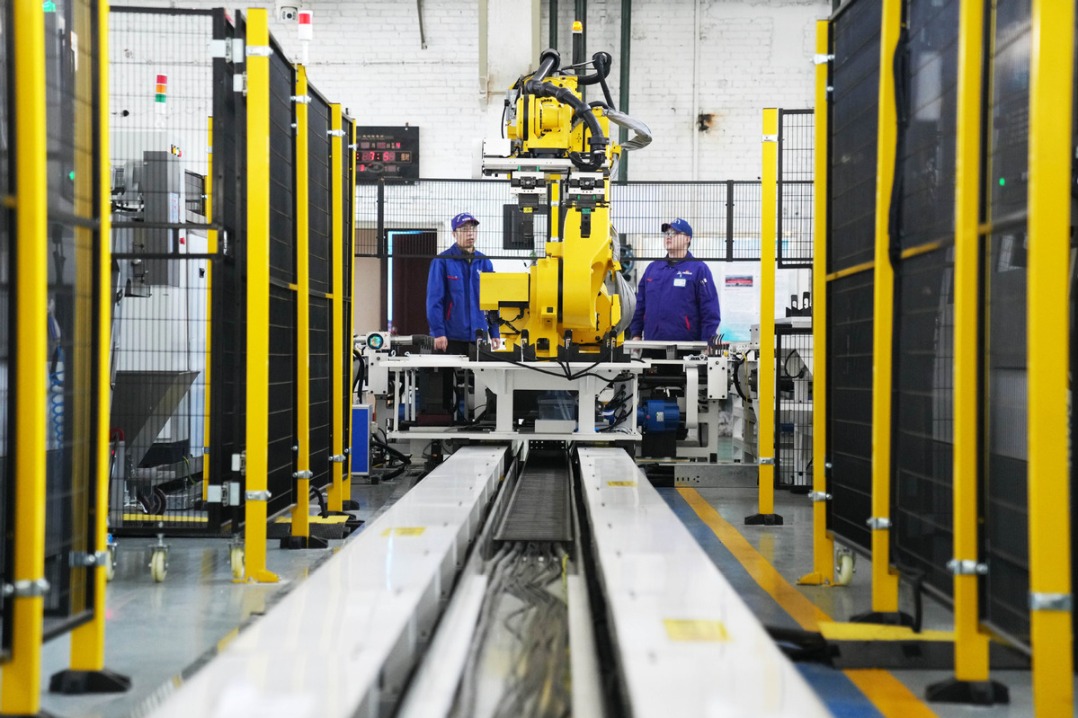Business environment

Environmentally Friendly Economy
With a continuously expanding economy and fast evolving science and technologies, Shenzhen is upgrading its industries to promote an environment-friendly lifestyle and low-carbon growth. The quality, optimally structural and low-energy consuming development mode has become the city's new normal. About half of Shenzhen's total area is within a nature protection zone for suburban parks. Forests cover 41.2 percent of the city's total land.
Saving energy and reducing emission
In 2015, Shenzhen achieved the emission reduction target, set by Guangdong Province, of four major pollutants, namely chemical oxygen demand, ammonia nitrogen, sulfur dioxide and nitrogen. The emission reduction of chemical oxygen demand, ammonia nitrogen and sulfur dioxide also met ahead of time the target set by the 12th Five-Year Plan for Energy Saving and Emission Reduction. The city's water consumption per 10,000 yuan of GDP fell by 43 percent.
The city has promoted the usage of renewable energy such as solar power and garbage power. There are seven garbage incineration power plants and they generated 978,000,000 kilowatt-hours in 2015, making Shenzhen a national leader in the use of renewable energy.
Shenzhen fully adopted the national IV and up emission standards and promoted the use of gasoline meeting the national V emission standard across the city. Over 28,000 new-energy vehicles were put into use by 2015 and won the city the Urban Transportation Leadership Award.
By April 13, 2016, the total volume transaction of carbon emission reached 400 million yuan and the transaction was over 10 million tons.
Green lifestyle
Last year, several activities focusing on promoting low-carbon lifestyle have been held. Citizens were encouraged to participate in events such as low-carbon cycling, visiting environment-friendly buildings and Earth Hour.
In 2015, over 11.37 million square meters of environmental-friendly buildings were completed in Shenzhen, adding up to 33 million square meters in total. The number and scale of environmentally-friendly buildings of Shenzhen continues to top the nation's large cities.
Financial Services
Shenzhen is a financial hub of China, with the financial industry comprising a hefty portion of the city's GDP. Shenzhen ranked 23rd among the world financial centers, according to the Global Financial Centers Index 18 that was released in September 2015. Shenzhen was the 15th most competitive financial center worldwide based on the Xinhua-Dow Jones International Financial Centers Development Index (IFCD) in 2015.
Financial industry
In 2015, the add value of Shenzhen's financial industry reached 254.28 billion yuan, up 15.9 percent from the previous year, ranking third in China. The added value of the financial industry accounted for 14.5 percent of the city's GDP. The city's total assets of the industry amounted to 9.19 trillion yuan, ranking third in China. Shenzhen has 202 listed companies, ranking sixth in the country. The total market value of the listed companies reached 4.6 trillion yuan, ranking third in the country. Shenzhen has 378 financial institutions with the numbers of its banks, security institutions, insurance companies and foreign financial companies and employees ranking among the tops in China.
In 2015, the transaction scale of interbank monetary markets and bond markets achieved 63.45 trillion yuan, up 90.3 percent from last year, ranking third in China. The cross-border RMB transaction reached 1.38 trillion yuan in 2015. Since the launch of the cross-border RMB business, the total transaction was 4.31 trillion yuan with 153 countries and regions involved.
Banking
By the end of 2015, total savings deposits in Shenzhen banks reached 5.78 trillion yuan, up 15.6 percent from the previous year and ranking third in the country. Loans reached 3.24 trillion yuan, up 15.4 percent from 2014 and ranking third in China. Shenzhen is the first Chinese city to provide cross-border RMB loan service. By the end of 2015, the recorded Qianhai cross-border RMB loans reached 33.93 billion yuan, accounting for 40 percent of the country's total.
Securities industry
As one of the centers of China's securities markets, Shenzhen is home to the Shenzhen Stock Exchange (SSE) - one of the two stock exchanges on the Chinese mainland. By the end of 2015, 1,746 firms were listed at the SSE. The total stock transaction of the SSE reached 122.5 trillion yuan, comprising a half of the total volume in China. Shenzhen has 19 security companies, ranking second in the country. The city has 24 fund companies, and the net value of the public offering of fund was 1.96 trillion yuan, up 86.34 percent from last year. The number of fund companies, the funds they managed, the total scale of the fund, and the net value of fund assets ranked second in China. Shenzhen has 13 futures companies, ranking third in China.
Insurance
Shenzhen insurance firms saw robust growth in 2015. The total premium income reached 64.76 billion yuan, growing 18 percent from 2014 and ranking fourth in the country. The number of insurance companies amounted to 22, and the insurance branches were 70. The total assets of insurance companies amounted to 3.17 trillion yuan, comprising one-fourth of that in China.
Equity investment
Shenzhen's equity investment industry leads China. In 2015, the number of registered equity fund companies in Shenzhen amounted to 46,000, the total registered capital amounted to 2.8 trillion yuan. The Qianhai Equity Transaction Center started to operate in May 2013 with over 9,000 enterprises listed, making it a regional equity transaction center with the most listed enterprises in China. Shenzhen has become the pilot city to have Qualified Foreign Limited Partner and the registered capital is over 20 billion yuan.
Financial environment
Shenzhen is one of the financial centers in China. With the rapid development of Shenzhen's economy and finance, the status of the financial industry as a pillar of its economy has been enhanced and strengthened since Shenzhen was established as a special economic zone over 30 years ago. The financial clusters include Futian, Luohu and Qianhai Shenzhen-Hong Kong Modern Service Industry Cooperation Zone. Representative enterprises include China Merchants Bank and Ping An Insurance Company of China. The city's Internet payment, loans, equity crowdfunding and other Internet finances top other cities on the Chinese mainland. By the end of 2015, Shenzhen had 20 third-party payment companies and 712 P2P platforms. Representative companies include Qianhai WeBank.
MOST POPULAR
- 1 A look at China's economy in Q1 of 2024
- 2 China to remove foreign ownership restrictions in value-added telecom services in pilot areas
- 3 Query service of A Guide to Working and Living in China as Business Expatriates launched
- 4 Clear negative lists to speed up services trade
- 5 Canton Fair opens in China with surge in overseas purchasers
Editors' Picks
 Infographic:
How to understand China's production capacity
Infographic:
How to understand China's production capacity
 Infographic:
Milestones of China's journey to space
Infographic:
Milestones of China's journey to space





